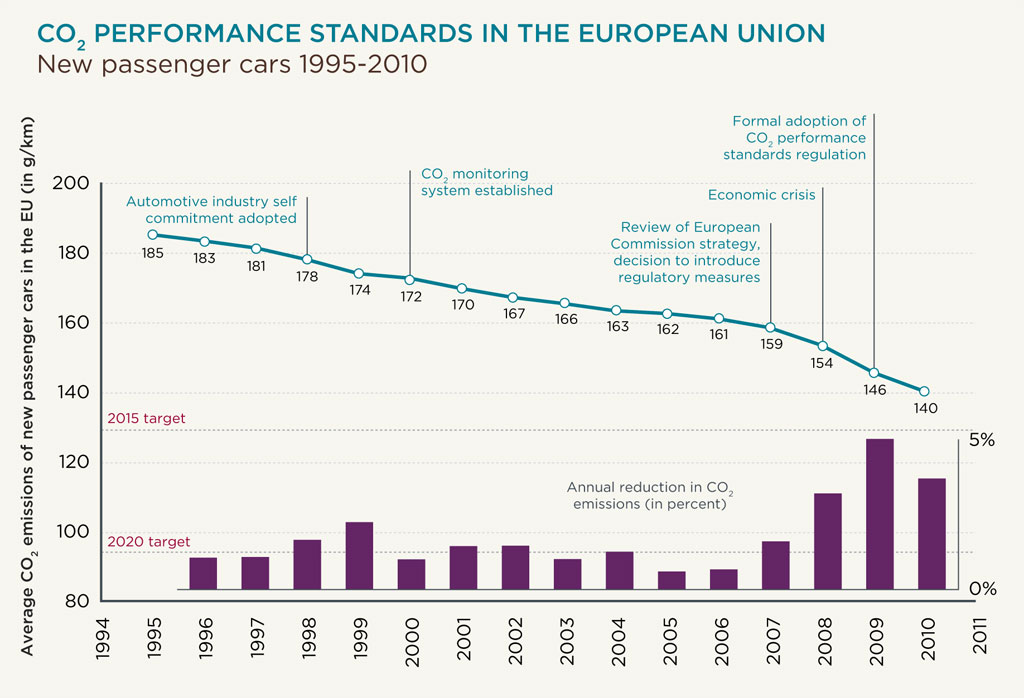Blog
The importance of mandatory standards
Recent trends in specific CO2 emissions from new passenger cars registered in Europe highlight the significant difference that mandatory emissions performance standards can make.
In 1998, the European Automobile Manufacturers’ Association (ACEA), JAMA, and KAMA agreed to reduce average CO2 emissions from new cars sold to 140 g/km by 2008, which translated into a 25% reduction compared to the 1995 level. They also agreed to review the rate of progress, with a view toward making subsequent reductions—120 g CO2/km by 2012.
But the automakers’ commitment lacked any binding burden-sharing. The result was annual emission reductions of only 0.6 to 2.2% between 1998 and 2006. As it became clear that neither the 2008 target of 140 g CO2/km nor the 120 g CO2/km objective for 2012 would be met, the European Commission announced that it would propose mandatory reductions. The regulation (EC 443/2009) setting CO2 emission performance standards for new passenger cars was adopted in April 2009.
Beginning with the Commission’s announcement, the rate of reduction in specific CO2 emissions from new passenger cars began to rise sharply: 1.6% in 2007, 3.2% in 2008 and 5.4% in 2009. Preliminary commercial data for 2010 suggests that the average specific CO2 emission level for new passenger cars registered in the EU was at around 142 g CO2/km, which would translate into a reduction of approximately 2.5% compared to 2009. (The official emission level for 2010 will be announced later in 2011.) [Update 25 Aug: see the updated chart above.]
This suggests the magnitude of difference regulation makes. While the effects of the economic crisis and resulting incentives for new vehicle purchases offered by many EU member states potentially distort the annual emission reduction for 2009, the trend is very clear: switching from a nonbinding voluntary industry commitment to a binding regulation spurred significant reductions in specific CO2 emissions from new passenger cars in the EU.
Sources: 1995-1999 ACEA data for EU-15; 2000-2009 EU CO2 monitoring data (2000-2003 EU-15, 2004-2006 EU-25, 2007-2009 EU-27); 2010 EU-27 ICCT estimate based on vehicle registration data. Note that changes in the number of member states (from 15 to 27) have only minor effects on the overall emission level (about 0.5 g CO2/km) as passenger car sales numbers in the new member states are relatively low.

